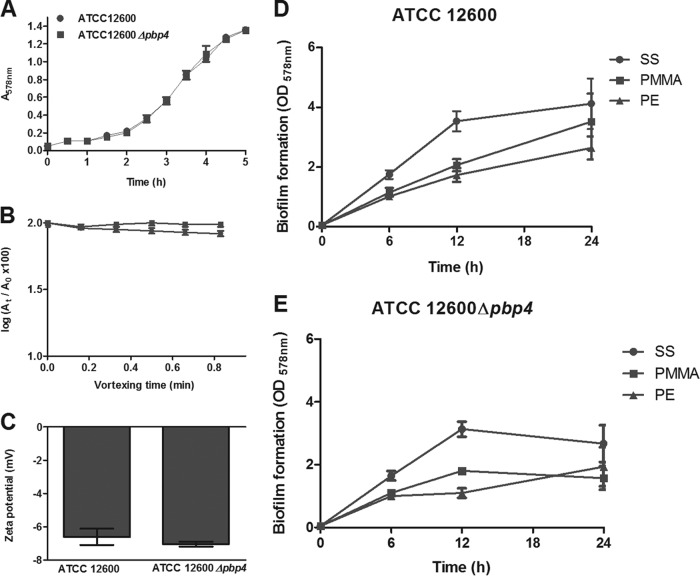FIG 3.
Effects of expression of pbp4 in S. aureus ATCC 12600 on strain characteristics not related to cell wall deformation. (A) Planktonic growth curves (fully overlapping) of S. aureus ATCC 12600 and S. aureus ATCC 12600 Δpbp4 at 37°C. (B) The optical density {log[(At/A0) × 100]} as a function of the vortexing time for the removal of S. aureus ATCC 12600 and its isogenic mutant, S. aureus ATCC 12600 Δpbp4, from the aqueous phase (10 mM potassium phosphate buffer, pH 7.0) by hexadecane. The absence of removal indicates a hydrophilic cell surface. Each point represents the average ± standard error of the mean from three individual experiments with separately grown staphylococcal cultures. None of the differences between S. aureus ATCC 12600 and S. aureus ATCC 12600 Δpbp4 were statistically significant. (C) Zeta potentials of S. aureus ATCC 12600 and S. aureus ATCC 12600 Δpbp4 in PBS, pH 7.0. Each point represents the average ± standard error of the mean from three individual experiments with separately grown staphylococcal cultures. None of the differences between S. aureus ATCC 12600 and S. aureus ATCC 12600 Δpbp4 were statistically significant. (D and E) Biofilm formation by S. aureus ATCC 12600 and S. aureus ATCC 12600 Δpbp4, expressed as the OD578, after 6, 12, and 24 h of growth on SS, PMMA, and PE.

